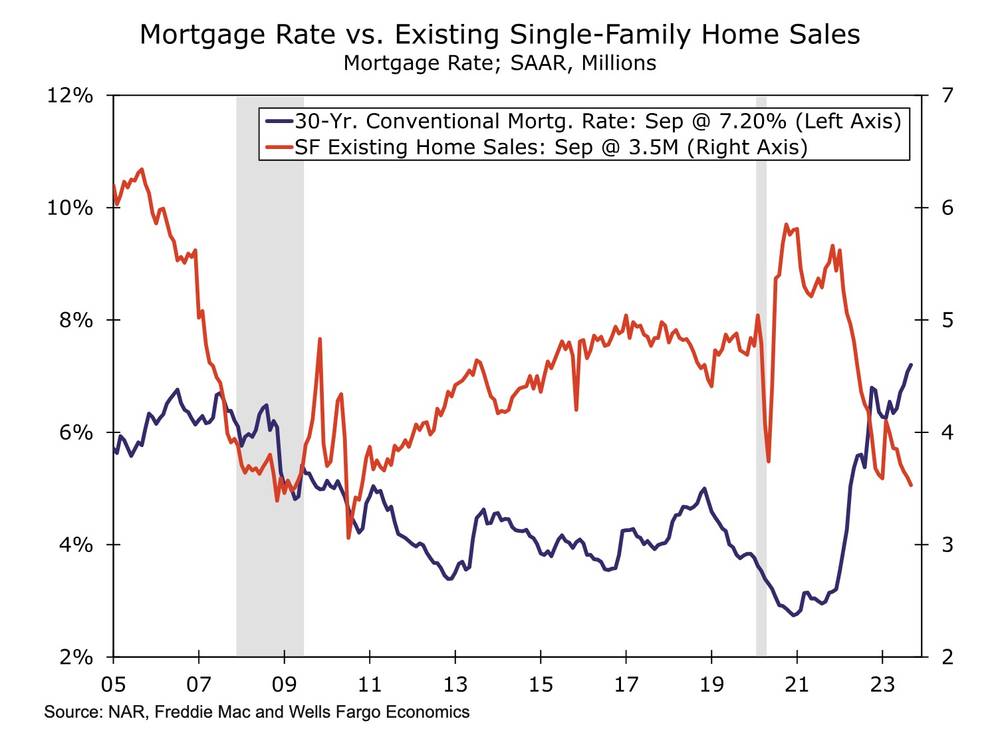Wells Fargo is now the second major bank to draw parallels between today’s housing market and the one seen in the early ‘80s. Back then, mortgage rates were near 19%, and the market had slipped into a recession. Home sales slowed, and new construction plummeted.
According to both Wells Fargo and Bank of America, many of the conditions that caused that downturn have resurfaced today.
Could that mean a similar housing recession is in the cards again? Here’s what the reports say.
Higher Mortgage Rates May Tip The Scale
A steep run-up in mortgage rates is the biggest link between today’s market and that of the 1980s. Today, the average 30-year mortgage rate has gone from under 4% to nearly 8% in under two years. That’s still a far cry from the 18%-plus rates seen four decades ago, but it has increased the costs of borrowing substantially—pushing many buyers out of the market and keeping would-be sellers on the sidelines.
The same thing happened in the 1980s when—just like today—the Federal Reserve hiked rates in an effort to tame inflation. This sent mortgage rates up, slowing home sales and tanking construction.
The first part—slowing sales—has already begun to repeat itself. As rates began to jump in 2022, sales took a steep dive.

“The residential sector now appears to be contracting alongside the recent move higher in mortgage rates,” Wells Fargo economists Charlie Dougherty and Patrick Barley noted in commentary published on the bank’s website.
That downtrend will likely continue, the banks say. Though the Federal Reserve skipped a rate hike at its Oct. 31 meeting, it has indicated it will keep interest rates high for the foreseeable future.
Wells Fargo reported:
“Although mortgage rates may gradually descend once the Federal Reserve begins to ease monetary policy, financing costs are likely to remain elevated relative to recent norms. A ‘higher for longer’ interest rate environment would likely not only weigh on demand, but could also constrain supply by reducing new construction and discouraging prospective sellers carrying low mortgage rates from listing their homes for sale.”
The Silver Lining
But even if the market does continue its slowdown, a crash in home prices is unlikely. In the ‘80s, home prices held fairly steady despite higher borrowing costs, and it appears both banks see a similar trajectory for home prices in today’s market.
Bank of America reported in a note:
“Looking back at previous housing recessions, we think the 1980s are a better analogy for today’s market than the 2008 housing crash. Some sales activity should be supported by millennials reaching the prime homebuying age, and single-family building permits have steadily held up. This can help the housing market retain some of its momentum without falling apart.”
Join the community
Ready to succeed in real estate investing? Create a free BiggerPockets account to learn about investment strategies; ask questions and get answers from our community of +2 million members; connect with investor-friendly agents; and so much more.
Note By BiggerPockets: These are opinions written by the author and do not necessarily represent the opinions of BiggerPockets.

